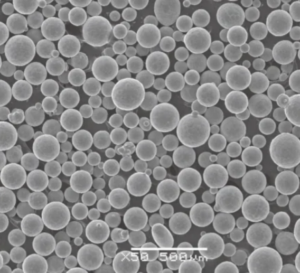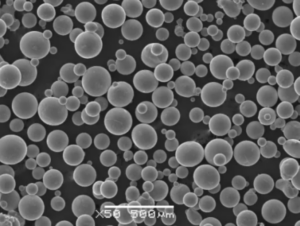흔히 3D 프린팅으로 알려진 적층 제조는 복잡한 맞춤형 부품을 제작할 수 있게 함으로써 제조 산업에 혁신을 가져왔습니다. 다양한 적층 제조 기술 중 바인더 제팅 적층 제조 (BJAM)은 다목적성과 비용 효율성이 돋보이는 기술입니다. 이 문서에서는 바인더 제팅의 세계에 대해 자세히 알아보고, 광범위한 개요를 제공하며, 특정 금속 분말 모델을 살펴보고, 기술의 응용 분야, 장점 및 한계에 대해 논의합니다. 숙련된 전문가든 이 개념을 처음 접하는 사람이든 이 가이드는 바인더 제팅에 대해 자세히 안내하여 필요한 모든 정보를 얻을 수 있도록 도와줍니다.
바인더 제팅 적층 제조 개요
바인더 제팅은 분말 기반 재료와 액체 결합제를 결합하는 독특한 적층 제조 기술입니다. 열을 사용하여 재료를 융합하는 다른 3D 프린팅 방법과 달리 바인더 제팅은 이 바인더를 사용하여 원하는 모양을 만듭니다. 이 공정은 일반적으로 바인더가 금속 또는 세라믹 입자를 선택적으로 "접착"하여 단단한 물체를 형성하는 레이어별로 이루어집니다.
바인더 제팅은 금속부터 세라믹, 모래까지 다양한 재료에 사용할 수 있어 다용도로 활용할 수 있습니다. 또한 열을 가하지 않기 때문에 열 변형의 위험이 적어 복잡한 형상과 섬세한 구조에 이상적입니다.
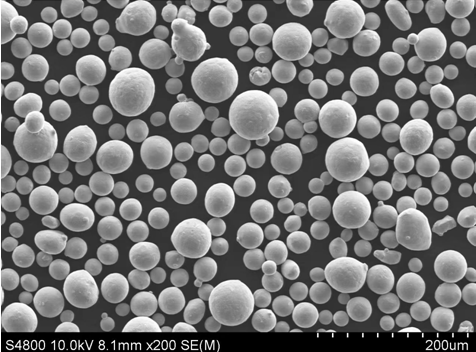
바인더 제팅 적층 제조의 구성
바인더 제팅은 분말 재료와 액체 바인더의 조합을 사용합니다. 바인더 제팅에 사용되는 분말 재료는 최종 제품의 특성에 결정적인 영향을 미칩니다. 아래는 바인더 제팅에 사용되는 특정 금속 분말 모델에 대한 자세한 분석입니다.
바인더 제팅의 특정 금속 분말 모델
| 금속 분말 모델 | 구성 | 속성 | 특성 | 애플리케이션 |
|---|---|---|---|---|
| 인코넬 625 | 니켈-크롬 | 고강도, 우수한 내피로성 | 부식 방지, 우수한 용접성 | 항공우주, 해양, 화학 공정 |
| 316L 스테인리스 스틸 | 철-크롬-니켈 | 우수한 내식성, 우수한 강도 | 연성, 생체 적합성 | 의료용 임플란트, 자동차, 식품 가공 |
| 17-4 PH 스테인리스 스틸 | 철-크롬-니켈-구리 | 높은 강도, 경도 | 강수량 강화, 부식 방지 | 항공우주, 원자력, 화학 산업 |
| 코발트-크롬 | 코발트-크롬 | 높은 내마모성, 생체 적합성 | 고밀도, 강력한 | 치과 임플란트, 항공우주, 의료 기기 |
| 구리(Cu) | 순수 구리 | 뛰어난 전기 전도성, 열 전도성 | 가단성, 연성 | 전기 부품, 열교환기 |
| 티타늄(Ti-6Al-4V) | 티타늄-알루미늄-바나듐 | 높은 중량 대비 강도, 내식성 | 생체 적합성, 강력함 | 항공우주, 의료용 임플란트, 스포츠 장비 |
| 알루미늄(AlSi10Mg) | 알루미늄-실리콘-마그네슘 | 가볍고 우수한 강도 | 높은 열 전도성, 연성 | 자동차, 항공우주, 소비자 가전 |
| 브론즈 | 구리-주석 | 높은 내식성, 우수한 가공성 | 고밀도, 강력한 | 예술적 조각품, 베어링, 부싱 |
| 공구강(H13) | 크롬-몰리브덴 | 높은 경도, 내마모성 | 내열성, 견고함 | 툴링, 금형, 금형 |
| 니켈 합금 718 | 니켈-크롬-철 | 우수한 고온 강도, 내식성 | 오래도록 견고하고 튼튼한 | 항공우주, 발전, 석유 및 가스 |
의 특성 바인더 제팅 적층 제조
바인더 제팅 적층 제조의 특성은 다른 적층 제조 기술과 차별화됩니다. 주요 특징에 대해 자세히 알아보세요:
소재의 다양성
바인더 제팅은 금속, 세라믹, 모래 등 다양한 재료에 사용할 수 있습니다. 이러한 다용도성 덕분에 항공우주부터 치과에 이르기까지 다양한 산업 분야에 적용할 수 있습니다.
표면 마감
바인더 제팅의 주목할 만한 특징 중 하나는 미세한 표면 마감을 구현할 수 있다는 점입니다. 레이어별 증착과 미세한 파우더 입자는 매끄러운 표면을 구현하여 광범위한 후처리의 필요성을 줄여줍니다.
생산 속도
바인더 제팅은 비교적 빠른 생산 속도로 유명합니다. 이 공정에는 상당한 열 에너지가 필요하지 않으므로 대량의 부품을 빠르게 인쇄할 수 있어 프로토타입 제작과 생산에 모두 적합합니다.
열 스트레스 없음
선택적 레이저 소결(SLS) 또는 직접 금속 레이저 소결(DMLS)과 같은 다른 방법과 달리 바인더 제팅은 고온을 사용하지 않습니다. 따라서 열 스트레스를 제거하여 최종 제품의 뒤틀림이나 뒤틀림의 위험을 줄입니다.
설계 유연성
바인더 제팅을 사용하면 복잡한 형상과 복잡한 디자인을 쉽게 구현할 수 있습니다. 이 방법을 사용하면 기존 제조 방식으로는 제작하기 어려운 내부 캐비티, 격자 구조 및 기타 피처를 만들 수 있습니다.
바인더 제팅 적층 제조의 응용 분야
바인더 제팅 적층 제조는 다용도성과 복잡한 부품 생산 능력으로 인해 다양한 산업 분야에서 응용 분야를 찾고 있습니다. 다음은 몇 가지 주요 응용 분야를 살펴보는 내용입니다:
| 애플리케이션 | 설명 | 산업 분야 |
|---|---|---|
| 프로토타이핑 | 테스트 및 검증을 위해 복잡한 형상을 가진 부품의 신속한 프로토타입 제작 | 자동차, 항공우주, 소비재 |
| 툴링 및 금형 | 다양한 제조 공정에 사용되는 내구성 있는 공구 및 금형 생산 | 사출 성형, 다이캐스팅 |
| 의료 기기 | 맞춤형 임플란트, 수술 도구 및 치과용 픽스처 제조 | 의료, 치과 |
| 항공우주 부품 | 고강도 및 내식성을 갖춘 가볍고 복잡한 부품 생산 | 항공우주, 방위 |
| 자동차 부품 | 엔진 부품과 같은 자동차 애플리케이션을 위한 맞춤형 및 복잡한 부품 제조 | 자동차 |
| 예술 및 장식 아이템 | 다양한 금속 분말을 사용하여 섬세한 조각품, 장신구 및 장식품을 제작합니다. | 예술, 패션, 홈 데코 |
| 열교환기 | 열전도율이 높은 소재를 사용한 복잡한 열교환기 설계 제작 | HVAC, 산업 장비 |
| 전기 부품 | 커넥터 및 버스바와 같이 전기 전도성이 우수한 부품 제조 | 전자, 전기 공학 |
| 캐스팅 패턴 | 금속 주조 공정용 샌드 몰드 및 코어 생산 | 파운드리, 금속 주조 |
| 연구 및 개발 | 신제품 및 혁신을 위한 맞춤형 재료 및 설계 테스트 | R&D, 학술 기관 |
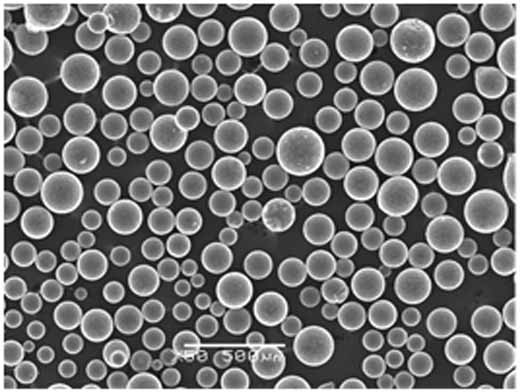
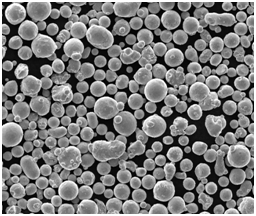
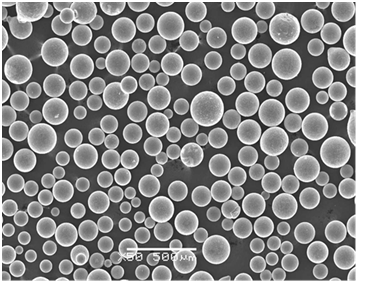
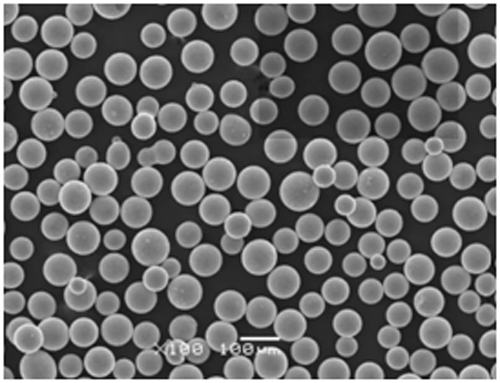
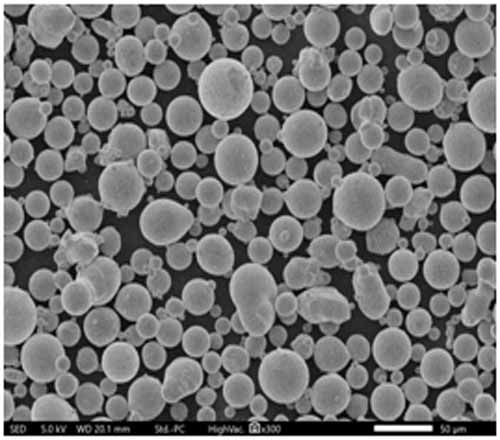
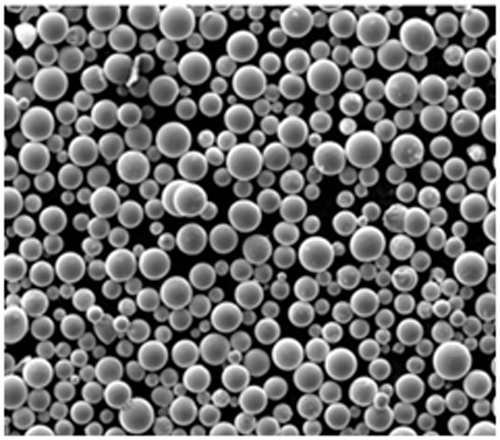
바인더 제지의 사양, 크기, 등급 및 표준
바인더 제팅과 관련된 사양, 크기, 등급 및 표준을 이해하는 것은 부품이 업계 요구 사항을 충족하는지 확인하는 데 매우 중요합니다. 아래는 이러한 측면을 요약한 자세한 표입니다:
| 재료 | 등급/표준 | 일반적인 크기 | 사양 |
|---|---|---|---|
| 인코넬 625 | AMS 5666, ASTM B443 | 분말 크기: 15-45 µm | 밀도: 8.44g/cm³, 융점: 1290-1350°C |
| 316L 스테인리스 스틸 | ASTM F138, ISO 5832-1 | 분말 크기: 15-53 µm | 밀도: 7.99g/cm³, 융점: 1371°C |
| 17-4 PH 스테인리스 스틸 | AMS 5643, ASTM A564 | 분말 크기: 10-45 µm | 밀도: 7.80g/cm³, 경도: HRC 40-47 |
| 코발트-크롬 | ASTM F75, ISO 5832-4 | 분말 크기: 10-30 µm | 밀도: 8.30g/cm³, 융점: 1330-1390°C |
| 구리(Cu) | ASTM B124, AMS 4501 | 분말 크기: 15-60 µm | 밀도: 8.96g/cm³, 융점: 1083°C |
| 티타늄(Ti-6Al-4V) | ASTM F1472, AMS 4911 | 분말 크기: 15-45 µm | 밀도: 4.43g/cm³, 융점: 1600-1660°C |
| 알루미늄(AlSi10Mg) | ISO 3522 | 분말 크기: 20-63 µm | 밀도: 2.68g/cm³, 융점: 577-660°C |
| 브론즈 | ASTM B584, SAE J463 | 분말 크기: 20-80 µm | 밀도: 8.7-8.9 g/cm³, 녹는점: 950-1050°C |
| 공구강(H13) | ASTM A681 | 분말 크기: 10-50 µm | 밀도: 7.80g/cm³, 경도: HRC 50-52 |
| 니켈 합금 718 | AMS 5662, ASTM B670 | 분말 크기: 15-53 µm | 밀도: 8.19g/cm³, 녹는점: 1260-1336°C |
공급업체 및 가격 세부 정보
바인더 제팅용 금속 분말을 소싱할 때는 신뢰할 수 있는 공급업체와 가격을 고려하는 것이 중요합니다. 아래 표는 잠재적 공급업체에 대한 개요와 각 공급업체의 대략적인 가격을 제공합니다.
금속 분말:
| 공급업체 | 재료 | 가격(대략) | 참고 |
|---|---|---|---|
| GKN 첨가제 | Inconel 625, 316L SS, Ti-6Al-4V | kg당 $100 - $300 | 고품질 분말, 글로벌 공급업체 |
| 호가나스 AB | 17-4 PH SS, 알루미늄, 청동 | kg당 $150 - $400 | 최고의 금속 분말 생산자, 맞춤형 배합 |
| 목수 첨가제 | 코발트-크롬, 니켈 합금 718 | kg당 $200 - $500 | 프리미엄 재료, 항공 우주 및 의료 분야에 중점 |
| 샌드빅 적층 제조 | 공구강 H13, 구리 | kg당 $120 - $350 | 첨단 재료, 광범위한 R&D 역량 |
| LPW 기술 | 다양한 금속 분말 | kg당 $180 - $450 | 고성능 분말, 산업 표준 |
| Arcam AB(GE 애디티브) | 티타늄 합금, Inconel 718 | kg당 $250 - $600 | 항공 우주 및 의료 응용 분야 전문 |
| AP&C(GE 애디티브 계열사) | 알루미늄, 스테인리스강 | kg당 $200 - $500 | 고품질 구형 분말 전문 지식 |
| EOS GmbH | 다양한 금속 분말 | kg당 $220 - $550 | 일관성과 품질로 유명 |
| Renishaw plc | 스테인리스강, 티타늄 | kg당 $190 - $480 | 정밀 엔지니어링 및 첨단 재료 |
| TANIOBIS GmbH | 코발트-크롬, 니켈 합금 | kg당 $210 - $550 | 혁신적인 재료 솔루션, R&D에 중점 |
의 장점과 한계 바인더 제팅 적층 제조
모든 제조 공정과 마찬가지로 바인더 제팅에도 장단점이 있습니다. 이를 이해하면 이 방법이 프로젝트에 적합한지 결정하는 데 도움이 될 수 있습니다.
장점
| 이점 | 설명 |
|---|---|
| 소재 다양성 | 바인더 제팅은 금속, 세라믹, 모래를 포함한 다양한 재료를 사용하여 응용 분야에서 유연성을 제공할 수 있습니다. |
| 열 변형 없음 | 공정에 열이 없으므로 부품에 뒤틀림이나 잔류 응력이 없어 정확도가 높아집니다. |
| 높은 생산 속도 | 대량 생산에 적합한 바인더 제팅은 프로토타입 제작과 생산 모두에 효율적입니다. |
| 우수한 표면 마감 | 사용되는 미세 분말 입자는 매끄러운 표면을 생성하여 후처리의 필요성을 줄입니다. |
| 복잡한 지오메트리 | 복잡한 디자인과 기존 제조 방법으로는 어려운 내부 기능을 만드는 데 이상적입니다. |
제한 사항
| 제한 사항 | 설명 |
|---|---|
| 재료 다공성 | 부품은 완전한 밀도를 얻기 위해 침투 또는 소결이 필요할 수 있으며, 이는 추가 단계와 비용을 추가합니다. |
| 기계적 특성 | 바인더 제팅 부품의 기계적 강도는 DMLS 또는 주조와 같은 다른 방법으로 생산된 부품과 일치하지 않을 수 있습니다. |
| 후처리 요구 사항 | 표면 마감은 좋지만 일부 응용 분야에서는 기계 가공 또는 침투와 같은 추가 후처리가 필요할 수 있습니다. |
| 제한된 재료 선택 | 다재다능하지만 모든 재료가 바인더 제팅에 적합한 것은 아니며, 특히 고온 합금의 경우 더욱 그렇습니다. |
| 금속 분말 비용 | 특히 고품질 응용 분야의 경우 금속 분말 비용이 상당할 수 있습니다. |

자주 묻는 질문
이 포괄적인 가이드를 마무리하기 위해 바인더 제팅에 대한 일반적인 질문을 다루는 FAQ 섹션이 있습니다.
| 질문 | 답변 |
|---|---|
| 바인더 제팅에 어떤 재료를 사용할 수 있습니까? | 바인더 제팅은 스테인리스강, Inconel, 티타늄, 세라믹 및 모래와 같은 다양한 재료를 사용할 수 있습니다. |
| 바인더 제팅은 대량 생산에 적합합니까? | 예, 바인더 제팅의 높은 생산 속도는 특히 복잡한 부품의 대량 생산에 적합합니다. |
| 바인더 제팅의 주요 장점은 무엇입니까? | 주요 장점으로는 재료 다양성, 열 변형 없음, 높은 생산 속도 및 복잡한 형상을 만들 수 있는 기능이 있습니다. |
| 바인더 제팅 부품은 산업용으로 사용할 만큼 강합니까? | 바인더 제팅 부품은 많은 응용 분야에 적합하지만 원하는 기계적 특성을 얻으려면 소결과 같은 후처리가 필요할 수 있습니다. |
| 바인더 제팅은 다른 적층 제조 방법과 어떻게 비교됩니까? | 바인더 제팅은 특정 응용 분야에서 더 빠르고 비용 효율적이지만 DMLS와 같은 방법에 비해 기계적 강도가 부족할 수 있습니다. |
| 바인더 제팅 부품에 필요한 후처리는 무엇입니까? | 재료에 따라 강도와 표면 마감을 개선하기 위해 소결, 침투 또는 기계 가공이 필요할 수 있습니다. |
| 바인더 제팅을 의료용 임플란트에 사용할 수 있습니까? | 예, 특히 티타늄 및 코발트-크롬과 같은 생체 적합성 재료를 사용하여 바인더 제팅은 맞춤형 의료용 임플란트를 만드는 데 사용됩니다. |
| 바인더 제팅은 복잡한 형상을 어떻게 처리합니까? | 바인더 제팅은 지지 구조 없이 내부 구조 및 오버행을 포함한 복잡한 형상을 생성하는 데 탁월합니다. |
| Binder Jetting용 금속 분말의 일반적인 비용은 얼마입니까? | Binder Jetting용 금속 분말은 재료와 품질에 따라 킬로그램당 100달러에서 600달러까지 다양할 수 있습니다. |
| Binder Jetting용 금속 분말의 주요 공급업체는 누구입니까? | 주요 공급업체로는 GKN Additive, Höganäs AB, Carpenter Additive, Sandvik Additive Manufacturing 및 EOS GmbH가 있습니다. |
결론
바인더 제팅 적층 제조 3D 프린팅 분야에서 다재다능하고 효율적인 방법입니다. 다양한 재료로 작업하고 우수한 표면 마감을 갖춘 복잡한 부품을 생산할 수 있는 능력으로 인해 다양한 산업 분야에서 상당한 잠재력을 제공하는 방법입니다. 그러나 다른 제조 공정과 마찬가지로 재료 밀도와 기계적 특성과 관련하여 한계가 있습니다. Binder Jetting의 전체 범위를 이해하면, 사용되는 특정 금속 분말부터 관련 응용 분야 및 공급업체에 이르기까지 프로젝트에 적합한지 여부에 대한 정보에 입각한 결정을 내릴 수 있습니다. 항공우주, 자동차, 의료 또는 예술 분야에 종사하든 Binder Jetting은 혁신과 생산을 위한 무한한 가능성을 열어줍니다.
이 기술을 더 자세히 탐구하려는 사람들에게는 공급업체와 연결하고 특정 재료 특성을 자세히 살펴보는 것이 Binder Jetting을 최대한 활용하는 데 중요한 단계가 될 것입니다.
